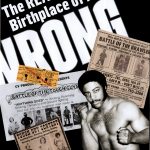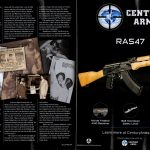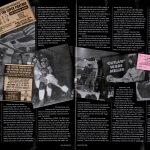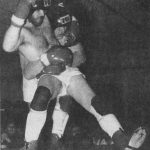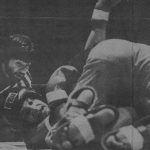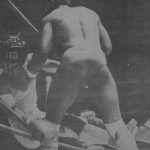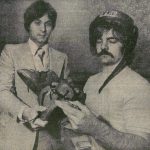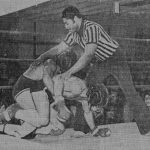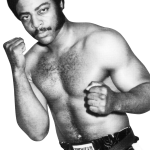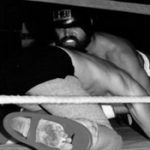Tough Guy Contest: The Birthplace of MMA
Wrong Place Wrong Time…The birthpace of MMA
How Pennsylvania’s Tough Guy Contest Gave Birth to Modern Day MMA
Walking through the streets of urban Pennsylvania in the late 1970s, you had to work hard to stay upbeat. Row upon row of brownstone and brick buildings spilled forth the poorest of the poor. Jobless men, women trying to keep track of young children many of whom would never know education or opportunity. Trash piled high at the curb. Graffiti-strewn walls of burned-out buildings created a landscape of despair, trapping those within its confines in a life of hopelessness. Steel mills were churning out profits for companies, but there was very little for the blue-collar workers. The median household income at the time was a few dollars more than $17,000. This made for the humble beginnings of the tough guy contest.
Racial and ethnic divides were strong. End up on the wrong street and groups of young men were ready to send you back to where you came. You’d have bruises to both your body and ego. The populations there yearned for something to unite them. They wanted a hero to take them away from the day-to-day depression and to ignite a sense of pride.
The “Rocky” movies were all the rage and perfectly captured the gritty essence of Pennsylvania’s cities at the time. Sonny Liston and Joe Frazier were state natives. They made people believe they could rise out of the streets to become something better. Guys were willing to do anything to escape and make a name for themselves, but names and reputations were made on the street. Fighting skills were currency and every neighborhood had their noted tough guy. It was about respect. It was about pride. Desperate men fought constantly and the winners often rose to legendary status. Even though Pittsburgh was this way of life’s epicenter, these same scenarios played out in city after city all across the country.
The Visionaries
 Bill Viola and Frank Caliguri were young men in their early 30s. They had their sights set on creating something big, something life changing for everyone involved. In retrospect, they were visionaries setting the stage for modern-day mixed martial arts (MMA) competitions, first popularized by the Ultimate Fighting Championship, now known as UFC. Just having a good idea isn’t enough, though, when you’re up against a corrupt political machine bent on your destruction.
Bill Viola and Frank Caliguri were young men in their early 30s. They had their sights set on creating something big, something life changing for everyone involved. In retrospect, they were visionaries setting the stage for modern-day mixed martial arts (MMA) competitions, first popularized by the Ultimate Fighting Championship, now known as UFC. Just having a good idea isn’t enough, though, when you’re up against a corrupt political machine bent on your destruction.
The Birthplace of MMA
In “Godfathers of MMA: The Birth of an American Sport,” Bill Viola Jr. and Dr. Fred Adams lay out several hundred pages of the fascinating story of CV Productions and its Tough Guy competitions. The detail the brainchild of Bill Viola Sr. and Frank Caliguri that sought to promote mixed martial arts fighting as a commercial enterprise, and the forces of the Pennsylvania State Athletic Commission that were aligned against them. Subsequently, despite its success among the public, the Tough Guy tale faded into 1980s history, to be replaced by the behemoth of the UFC in the early ’90s. Viola Jr. and Adam’s story, however, is an in-depth exploration of businessmen well ahead of their time.
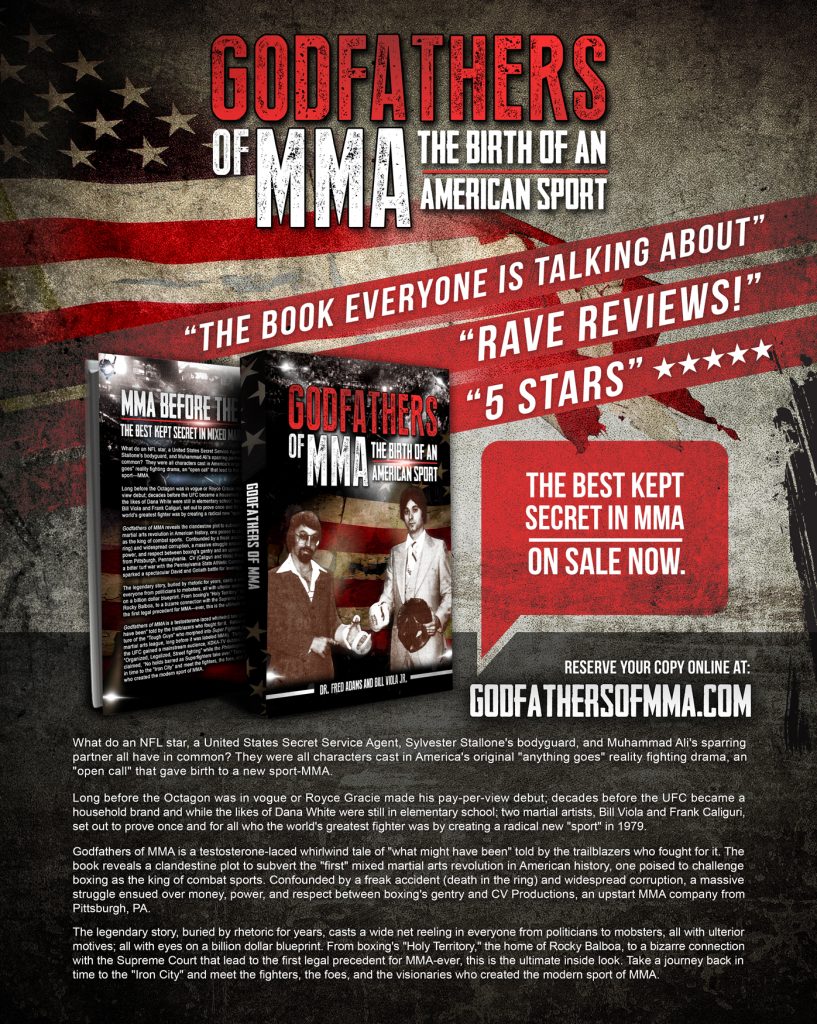 https://www.amazon.com/Tough-Guys-Birth-American-Sport-ebook/dp/B075J4ZYXVBehind The Scenes
https://www.amazon.com/Tough-Guys-Birth-American-Sport-ebook/dp/B075J4ZYXVBehind The Scenes
We know you can read, so rather than give you a book report, SKILLSET sat down with Bill Viola, Jr. We got the behind-the-scenes story on what it was like growing up around his dad, these fighters, and the birth of what would eventually become a multi-billion-dollar phenomenon for other promoters.
Combat tournaments that pit style against style are nothing new and date back centuries, but true commercialization of the sport on a wide scale never happened. Viola and Caliguri knew that the country was ready for a new form of entertainment. One that tapped into the local pride of street fighters from all backgrounds and that would propel combative sports into a new era. They were just the guys to capitalize on it and they created the Tough Guy contest.
Ready to Fight
As Bruce Lee starred on the silver screen in the ’70s and made everyone want to be the Dragon, Viola and Caliguri were promoting successful kickboxing and karate tournaments. There was no Internet, no social media, no YouTube. To promote the Tough Guy contest, it was newspaper ads, bar posters, gyms, and a lot of word of mouth. Invariably, some guy in some bar would say, “I could kick all of their asses,” and would sign up.
- Jacquet Bazemore MMA Referee
“Back then it was just like this whole mystery of what martial arts was about,” Viola Jr. adds, “but you still had a fraction of hardcore wrestlers or boxers and it was that age-old question of which discipline was best. All fighters thought what they did was the best. Whether they were street fighters, boxers, or fry guys — they all thought that what they did was superior.”
Going Legit
Viola and Caliguri looked at the landscape of underground and illegal fighting. They thought that with supreme organization, solid rulesets and proper promotion all of these local street fighters could come together and legitimately prove themselves — prove who was truly the best.
was either going to make people famous or embarrassed,” Viola, Jr. continues, “and they knew either way it was going to sell tickets. They knew people were going to love to see this guy who’s running his mouth either get his ass kicked or become victorious. It was really a genius idea.”
The intent was to create a true sport, not just a gladiator pit where anything goes. When asked how the Tough Guy contest differed from the modern-day UFC, Viola, Jr. states, “[CV Productions] wanted sports, and the original UFC wanted spectacle.”
Promoting Athletes
Viola saw the potential in the promotion of fighters as athletes. There were obvious financial upsides with endorsement deals and branding. However, the focus was on keeping them safe and healthy so that their notoriety could grow as well. What good is an athlete that can’t fight? Looking at the professional wrestlers of the day, the businessmen knew that marketing and entertainment were everything, and they yearned for legitimacy.
“He thought the sport would take off if he could get three or four guys that had unique personalities, some that could be spokespeople for the company, and others that just with their wild personalities could sell. He saw them as building the ranks by taking these guys from an amateur status and developing them into pros. That was the whole concept; get them in, start training them, give them a year of fighting under their belts, and then move them to pro divisions. “I give him a ton of credit. He was very ingenious with his foresight on this,” Viola, Jr. says about his father.
Viola originally wanted to call the competitors “Super Fighters,” based on the idea that they were more than barroom brawlers. One such personality was former Philadelphia Eagles’ defensive end, Len Pettigrew. In addition to his career in the NFL, Pettigrew had been an All-American five times in college wrestling and football and was a training partner to Muhammad Ali. He was a credentialed athlete. He also saw the potential in a new sport where he could excel, and he became a champion.
Diverse Backgrounds
But not all of the athletes had the pedigreed past of Pettigrew. The names of the fighters in these early stages of MMA were often as outlandish as the idea of the competition itself. “Outlaw” Wade Miller was perhaps one of the best known fighters of the time. He had a reputation for being a certified maniac. Wade learned his knuckle-busting techniques during his stints in prison. He was in for “armed robbery, shoot-outs with the cops, you name it.”
Sam Allen was known as “Rocky’s Bodyguard” and was a professional bodyman that guarded the likes of Telly Savalas and Sylvester Stallone. Fighters such as “Grave Digger” Harold Ratliff, Dennis “Trashman” Hart and Harvey “Go Nuts” Warner were street fighters, bouncers, and guys with nothing to lose in the ring.
Despite the characters, the competition was the focus. Not having any real precedent on which to base their judgments, the public was excited about watching these men battle. The press provided frenzied coverage, building the anticipation for the CV Productions events through their rabid reporting. Events were over-capacity everywhere they were held. The very first one at the Holiday Inn in New Kensington, PA in 1980.
The Matches
Fight trainer Jimmy Cvetic said that the energy there was undeniable, especially among the female fans who were just as excited to watch as the men. “It was a study in testosterone and titties. That was the epitome of it. It was rockin,’ man!”
Viola Jr. recounts one of the quintessential fights in Tough Guy history. It was between Vietnam vet and steelworker Frank Tigano and undefeated Tough Guy biker Danny Moyac.
“This was a big-rivalry fight. Kind of like a gang-related fight because Moyac was a biker from Erie in a gang called the Lower East Side Federation (LEF). And so, when they came down, they came deep. They came with the whole biker crew, all their colors, and they all had signs that said ‘Beware of Dog’ because Danny Moyac’s nickname was Mad Dog. They would come into the venue ahead of time and plaster the joint with ‘Beware of Dog’ signs everywhere to let people know that this was their territory, even though they were from out of town. He was coming in to fight the Pittsburgh boys. Probably one of the most intense rivalries was Danny Moyac versus anyone from Pittsburgh, because he was trying to prove that Erie had the tougher guys, with more street cred than the Pittsburgh guys.
Larger Than Life
“And that fight became like our ‘Rocky’ bout,” Viola Jr. says. “Tigano was a little steelworker who nobody thought had a chance against Mad Dog. Nobody. I mean, we had a rule that if you got beat in your first fight, if you bowed out or couldn’t continue, then you got a write-off so you could come back in later. Tigano actually got beat by Albert DeBatista in his first fight. I mean, everyone thought this guy was a nobody. He actually was a really good fighter but he took his first fight for granted. He tried to get too cute, did a spin kick or something, got caught, slammed and that was it. But he got to come back in.
“He fought his way all the way back up through the ranks to fight Mad Dog in the finals. He scored a ridiculous upset win over him. I mean that was really our ‘Rocky’ moment because no one gave this dude a chance. Mad Dog was just buzz-sawing through people with his grizzly beard. Tigano, this steelworker from Pittsburgh, comes out of nowhere and pulled off the ultimate upset.”
The media asked Tigano why he fought after the win. “I didn’t do it for the money, I did it for the trophy,” he answered. Tigano became a Rocky-esque gladiator that even the LEF had to appreciate.
The Wrap Up
“Godfathers of MMA: The Birth of an American Sport”is a captivating book with amazing insights into the energy, characters and politics surrounding the early days of mixed martial arts. The stories are jaw-droppers and one is left to wonder what would have happened to Viola and Caliguri had they been given the chance to see their organization flourish, rather than to have the Pennsylvania State Athletic Commission shut them down with broad-reaching and poorly written laws.
Before you buy another Affliction t-shirt and feel like a badass because you took a jiu-jitsu class, just realize that way back before you were born there were real men fighting not for fame, but for new types of competition, new types of business and the ultimate prize of respect. They were true tough guys.
Read more about the Pittsburgh, the birthplace of MMA:


